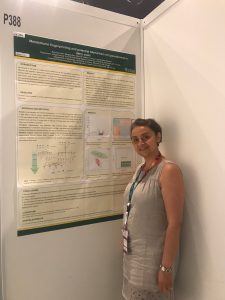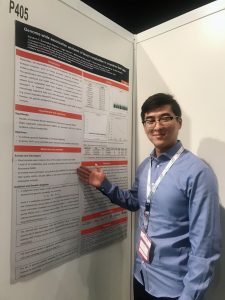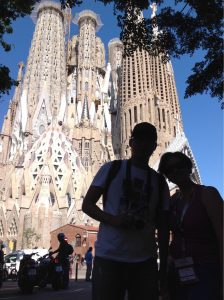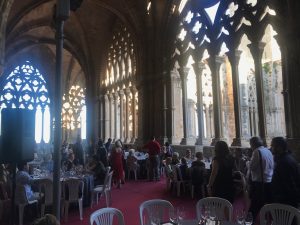by Elda Dervishi and Jiyuan Li
The 37th International Society for Animal Genetics (ISAG) conference was held in Lleida, Spain from July 7-12, 2019. Over 700 researchers from all over the world attended to present over 600 scientific contributions. Excellent oral presentations and posters demonstrated recent research advances in livestock and companion animal species. Canada was represented by 25 attendees. Among them, postdoctoral fellow Elda Dervishi and PhD student Jiyuan Li represented University of Alberta and Livestock Gentec with three posters.


ISAG had several plenary sessions, poster sessions and workshops. Dr. Yang Li (University of Chicago) proposed a formal model describing how genetic contributions to complex traits can be partitioned into direct effects from “core” genes and indirect effects from “peripheral” genes acting as trans-regulators. This model provides interesting new possibilities to help dissect complex traits in animal science.
A large number of the oral presentations reflected the wide interest in better understanding gene function in animal species and how this can improve different aspects of animal prediction and/or welfare. The Functional Annotation of Animal Genomes (FAANG) initiative investigates genomic functional analyses for cattle, sheep, fish and chicken, which were widely discussed. Dr. Christa Kuhn from the Leibniz Institute for Farm Animal Biology introduced the new EC Horizon 2020 project entitled “BovReg,” which is part of the FAANG initiative. Gentec is a member of BovReg; Elda and Jiyuan participated in the informal team get-together. The latter also participated in a post-conference FAANG workshop on metadata validation and data submission. The instructor emphasized the importance of standardizing and validating data to facilitate effective data sharing among the FAANG community.
Another topic was the potential role of the microbiome and epigenetics for gene editing. This is a “hot area” in animal genomics research. Dr. Luís Montoliu (Campus de Cantoblanco) gave a comprehensive talk on the current situation of genome editing including the tools used and their potential application in animal science.
Whole genome sequencing and RNA-seq are increasingly used in animal genomics research. New sequencing technologies such as ATAC-seq and single-cell RNA-seq have also become more popular together with ChIP-seq for chromatin analysis. These new technologies and analysis methods give us new insights into the function and network of genes and the genome. Again, they are an integral part of FAANG and BovReg.
An unforgettable gala dinner was served in the main building of the Old Cathedral built between 1300-1600, on top of the La Seu Vella mound. ISAG organizers really showed their hospitality. We tasted local cuisine and red wine produced by a local chateau. Everyone enjoyed the authentic Spanish food and the great view.


“Attending the conference was a great experience, giving us an opportunity to tell others about our work, to talk with so many excellent researchers from all over the world, to learn about new research going on in the world, to broaden our horizons and keep improving our academic ability,” reported Jiyuan and Elda. “We appreciate that our supervisor, Dr. Graham Plastow, supported our participation.”
